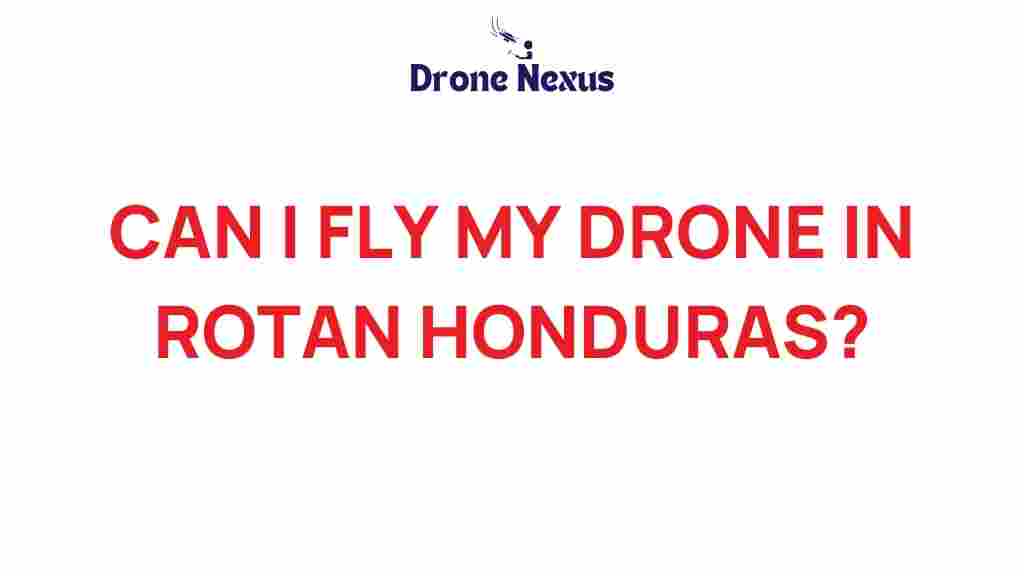Can You Fly Your Drone in Roatan, Honduras? Discover the Drone Regulations!
Roatan, Honduras is a breathtaking destination known for its stunning beaches, vibrant coral reefs, and lush landscapes. With such picturesque scenery, it’s no wonder that many travelers want to capture their experiences through aerial photography using drones. However, before you take to the skies, it’s crucial to understand the drone regulations in Roatan to ensure a safe and legal flying experience.
Understanding Drone Regulations in Roatan
The first step in flying your drone in Roatan is to familiarize yourself with the local regulations. In Honduras, the drone regulations are primarily enforced by the Honduran Civil Aviation Authority (AHAC). Here are some key points to consider:
- Registration: All drones weighing over 0.55 lbs (250 grams) must be registered with the AHAC.
- Insurance: It is advisable to have insurance for your drone, especially if you plan to operate it commercially.
- Permits: Certain areas may require special permits for drone operation, particularly in protected nature reserves or near military installations.
- Altitude Restrictions: Drones must not be flown higher than 400 feet (120 meters) above ground level.
- Proximity Restrictions: Keep your drone at least 30 meters away from people and structures.
- Night Flying: Flying at night is prohibited unless you have special permission and appropriate lighting.
Step-by-Step Process for Flying Your Drone in Roatan
Now that you understand the drone regulations, let’s discuss a step-by-step process to ensure that you can fly your drone legally and safely in Roatan.
Step 1: Register Your Drone
If your drone weighs over 0.55 lbs (250 grams), you need to register it with the AHAC. This process can usually be done online. Ensure to have your drone’s details, such as its serial number, ready for registration.
Step 2: Obtain Necessary Permits
Before flying, check if you need any permits for the specific location you plan to fly in. Popular tourist spots, national parks, or protected areas might have additional restrictions. Contact local authorities or check online resources for specific information.
Step 3: Plan Your Flight
Make sure to plan your flight carefully. Consider the following:
- Weather conditions: Avoid flying in high winds or rain.
- Time of day: Flying during daylight hours is recommended.
- Surrounding area: Be aware of people, animals, and structures nearby.
Step 4: Check Your Equipment
Before taking off, check your drone’s battery life, propellers, and camera functionality. Make sure everything is in working order to avoid any mid-flight issues.
Step 5: Follow Safety Protocols
When flying your drone, adhere to the following safety protocols:
- Always keep your drone within your line of sight.
- Do not fly over crowds or private property without permission.
- Respect local wildlife and maintain a safe distance from animals.
Troubleshooting Tips for Drone Pilots
Even with careful planning, you may encounter issues while flying your drone. Here are some troubleshooting tips:
Lost Connection
If you lose connection with your drone, remain calm. Most drones have a “return to home” feature that will automatically bring it back to the take-off point. Ensure this feature is activated before your flight.
Battery Issues
Always monitor your drone’s battery level during flight. If it gets low, return your drone immediately to avoid a crash. Regularly check your drone’s battery health to prevent unexpected failures.
Camera Malfunction
If the camera isn’t working as expected, check the connections and settings. Ensure that the lens is clean and that you have enough storage space for your photos and videos.
Respecting Local Communities and Nature
When flying your drone in Roatan, it’s essential to respect local communities and the natural environment. Here are some practices to keep in mind:
- Seek Permission: If you plan to fly over private property, always seek permission from the owner.
- Avoid Noise Pollution: Drones can be noisy; try to minimize the impact on local wildlife and residents.
- Leave No Trace: Ensure you don’t leave behind any litter or damage to the environment while capturing your aerial shots.
Conclusion: Enjoy Your Drone Experience in Roatan
Flying your drone in Roatan can be an exhilarating experience, allowing you to capture the island’s beauty from above. However, understanding and adhering to the drone regulations is crucial for a safe and enjoyable experience. Always remember to respect the local laws, communities, and the natural environment.
For more detailed information on drone regulations in Honduras, you can visit the Honduran Civil Aviation Authority website. If you need additional tips or support on drone flying, feel free to check out our drone enthusiasts’ forum for more insights.
With the right preparations and respect for the laws, your drone adventure in Roatan will surely be a memorable one. Happy flying!
This article is in the category Safety and created by DroneNexus Team
